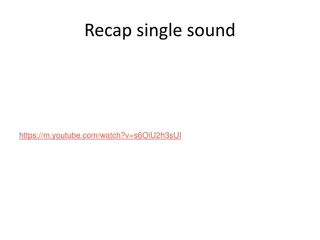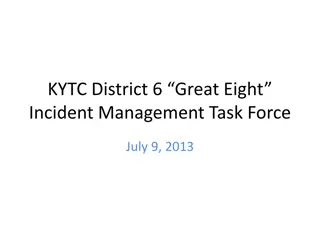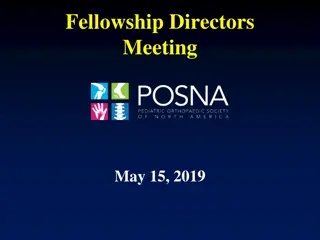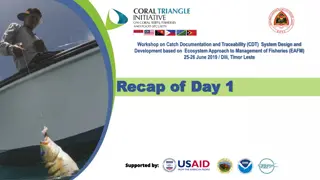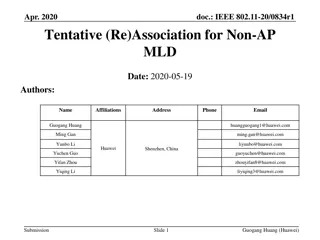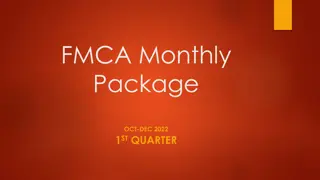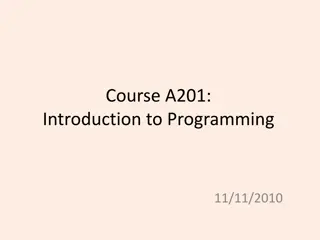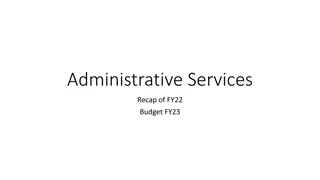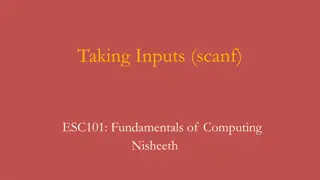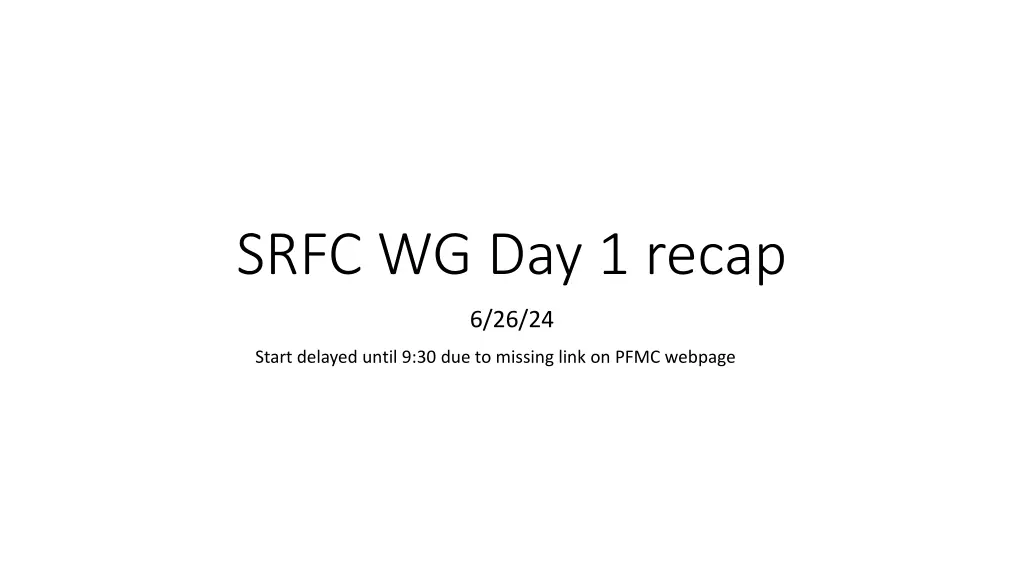
Based on the provided content, here are the requested outputs: "Escapement Reference Point Objectives Analysis
Discover insights on estimating MSY, optimal production levels, escapement goals, and incorporating hatchery needs into management strategies. Explore the complexities of natural-origin escapement and the implications for control rules in fisheries management.
Download Presentation

Please find below an Image/Link to download the presentation.
The content on the website is provided AS IS for your information and personal use only. It may not be sold, licensed, or shared on other websites without obtaining consent from the author. If you encounter any issues during the download, it is possible that the publisher has removed the file from their server.
You are allowed to download the files provided on this website for personal or commercial use, subject to the condition that they are used lawfully. All files are the property of their respective owners.
The content on the website is provided AS IS for your information and personal use only. It may not be sold, licensed, or shared on other websites without obtaining consent from the author.
E N D
Presentation Transcript
SRFC WG Day 1 recap 6/26/24 Start delayed until 9:30 due to missing link on PFMC webpage
Escapement reference point/objective Insufficient information to derive objectives based on natural-origin escapement at this time Analytical basis of SMSY should be a spawner-recruit analysis where spawners are natural- area spawners Recruits should not be SI x proportion natural Too few years, insufficient escapement and flow range Finalized cohort reconstruction would be more accurate for those years & future Arguments for RBDD fry as recruits: Simple metric, routinely updated Spawner shortfalls have been most acute in Upper Sacramento Arguments for Munsch et al index as recruits: Represents whole Sacramento basin Environmental covariate accounted for (but could be added to RBDD) Includes lower river and delta effects (but how much density dependence there?) Tighter relationship of natural-area vs total escapement Conservation objective and/or escapement targeted by control rule should consider hatchery needs as well. Want S-R based off natural-area spawners, we have such hatchery dominated runs that meeting natural-area goal is probably going to meet hatchery broodstock collection goals, how explicitly do we need to model this? A lot of hatchery fish want to get back to the hatchery. CG: keep examining both Leaning this way? RBDD, noting work already done ID as prelim preferred but don t fully rule out
Probably cannot estimate MSY directly Options for optimal production level in S-R analysis Based on SMSY/SMAX ratio Based on maximum production (still/back on table?) Something in between Based on qualitative sense of diminishing returns Based on semi-quantitative identification of diminishing returns, risk tolerance May need further adjustments for hatchery broodstock needs and/or river harvest and/or ecological OY considerations Hatchery success metric ideally tied to production from hatcheries, not escapement to hatcheries Leaning this way at least for SMSY?
Units for escapement ref. points/objective Could be natural-area escapement for consistency with S-R analysis Escapement by area is already reported Conversion to total natural area adults might still be needed from units in RBDD or Munsch analysis Could probably just re-run Munsch analysis with spawners = natural-area SRFC adults SI forecast does not distinguish by predicted area of return SHM does not distinguish by predicted area of return For escapement goals incorporated into control rule, either forecast and SHM would need modification, or an external module would need to be added (but we have ways to do this) Could be total escapement for consistency with current models & hatcheries / river harvest Which method to convert across scales? Simplicity versus analytical rigor Deterministic versus probabilistic approaches Do units for SMSY and conservation objective need to be the same? May be more flexibility in quantities not used for yearly planning e.g. if control rule & de minimis criteria re-parameterized based on C.O., SMSY only relevant in postseason status determinations, no adjustment to forecast units needed Control rule may be of more interest/direct impact than C.O.? C.O. may not need annual focus.
In-river harvest WG should stay out of allocation questions But, could be value in presenting relationship between river run size and river harvest as additional context for conservation objective or reasons OY might diverge from MSY Note that river harvest depends on total river run size, not natural- area only If we do work to get improved natural-area goals and hatcheries, will river harvest issue implicitly be satisfied? Could probably say this assuming no changes from historical seasons and regulations.
Data/monitoring considerations Regardless of units of conservation objective or SMSY, clear agreement between STT and SSC and WG on the value of information that can dis-entangle escapement, harvest, and production by origin Thus, important to continue to collect and analyze CWT* data and scales and report in timely fashion *(or embrace full transition to PBT) Whenever unmarked/PBT-only releases occur, needs to be adequate genetic monitoring of ocean harvest, river harvest, spawning areas, and hatcheries in relevant return years and that data should be available in a reasonable time frame
FMSY proxy and SMSY/SMAX ratio Data prior to late 1970s not informative/applicable Less relevance to north-migrating stocks, though may be freshwater similarities with lower Columbia New KRFC analysis more informative than old analysis due to more current data Rogue analysis fairly recent, geographically proximate Look into information for Umpqua, other SO/NC stocks, lower Columbia Should have a sense of what s out there before September Could be candidate for methodology review Useful to have science/method approved for future application
Risk tables and open discussion On-ramps for more formal buffering of uncertain forecasts and/or harvest rate predictions? Inform on year-specific harvest versus escapement/future yield tradeoffs? Could be an opportunity to increase or decrease harvest from status quo Interest in accounting for pathogens, interactions, cumulative effects CG: Further modifications of control rule, consideration of matrix approach Forecasting uncertainty paper as potential methodology review topic? Already written Could inform WG tasks in TOR related to control rule and forecast Could inform future application of risk tables given P*/sigma focused development re: groundfish and CPS Free version if paywalled




